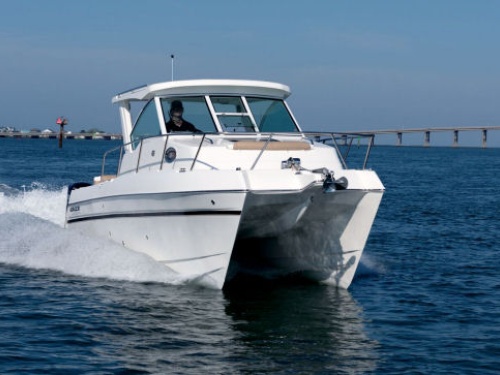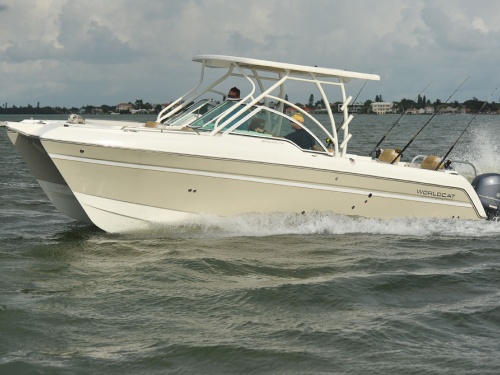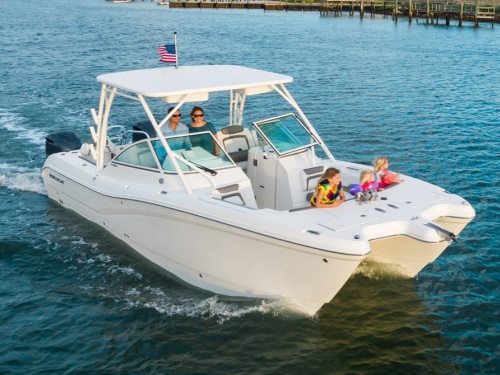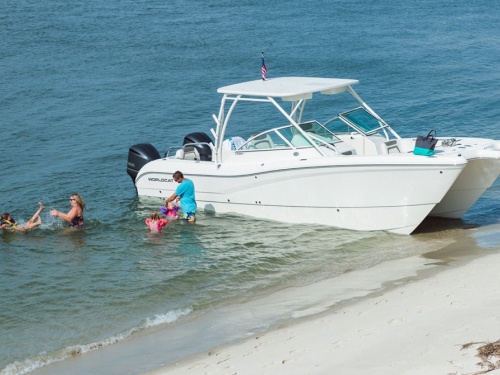Access More Boat Tests
Already have an account? Login
By submitting this form, you acknowledge that you have read and agree with the Privacy Policy & Terms of Use of BoatTEST.com.
World Cat 320DC (2015-)
Brief Summary
The helm deck of the World Cat 320DC maximizes the available space with cushioned seating for four on separate fiberglass pods to port, all of which converts to a single aft-facing dual lounge, dual facing seats, or dual seats facing either fore or aft. A removable wall-mounted table eliminates the need for having dedicated storage, as with the bow. Compact accommodations for overnighting are hidden away in the port hull, while the starboard side contains a wet head.



